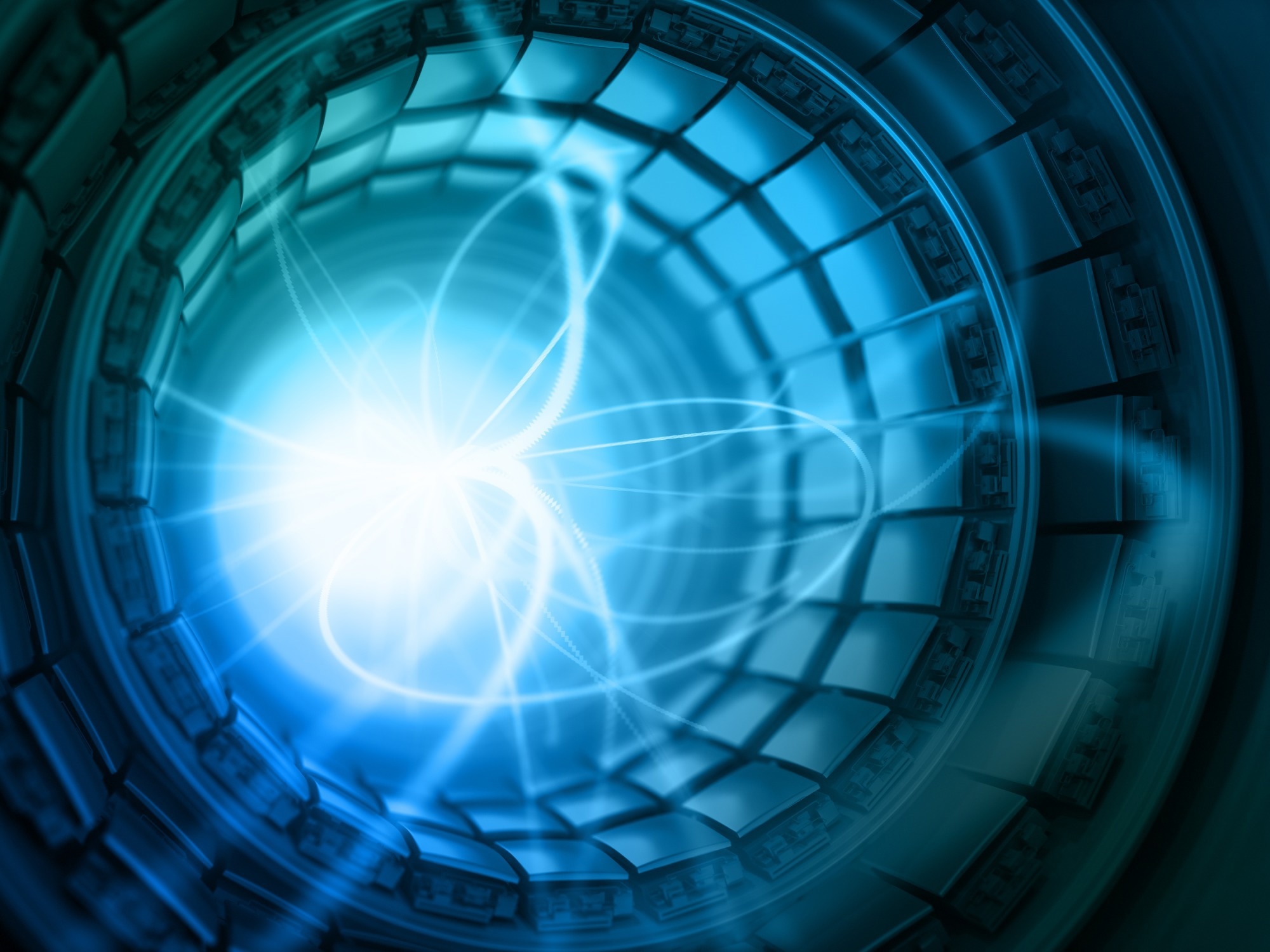Modern particle accelerators, such as the Large Hadron Collider at CERN, allow particles to collide with each other at a speed close to the speed of light and at energy densities far higher than inside a supernova explosion of a star.

Image Credit: Andrey VP/Shutterstock
Some, such as the electron storage ring of the Diamond Light Source in the United Kingdom, allow electrons to circle for millions of kilometers close to the speed of light, causing the electrons to emit bright X-Ray radiation for science experiments.
These are obviously extreme conditions, and having a random gas molecule in the way of speeding particles is undesirable. This is where ultra-high-vacuum (UHV) is helpful.
UHV is essentially “the emptiest emptiness that we can achieve.” It is a remarkably challenging task, as researchers and engineers from the field would agree.
A typical UHV level in particle accelerators is 10-10 mbar. This is one gas molecule in a volume equivalent to a small sand grain (SSG volume).1 This is a vacuum almost as rarefied as that found on the surface of the Moon.2 In contrast, the air we breathe contains 10 trillion gas molecules in an SSG volume.3 This is a substantial difference quantitatively and qualitatively.
At atmospheric pressure, gas molecules continually collide with mean free path length of approximately 0.1 µm between each collision.4
At 10-10 mbar with a mean free path length of approximately 1000 km, the gas molecules undertake journeys in isolation from one vacuum wall to another or occasionally into the pump.
As a UHV engineer, material outgassing inside a vacuum is a continuous struggle. When considering a section of a particle accelerator beam pipe with an inner diameter of 50 mm, if the pipe is comprised of austenitic stainless steel, it will, unbaked,5,6 emit approximately 1,000 gas molecules per second per SSG volume after 10 hours of pumping.7
If the inner pipe is fully clad with silicone, though not recommended, it will outgas 10,000 times as much, i.e., 10,000,000 gas molecules per second per SSG volume after 10 hours of pumping.8
Only one gas molecule per SSG volume can be tolerated, which is part of the challenge of UHV. Strong vacuum pumps and suitable materials are required.
Particle accelerators also have radiation challenges. A high-energy particle may hit a material, damaging it and contaminating the vacuum with some of its atoms. In a radiative environment, if fluorine or chlorine atoms are not wanted in the apparatus, common, halogen-containing polymers, such as PTFE, cannot be used.
Engineers at Allectra love challenges like these. In 2018, Allectra introduced KAP301, a radiation-resistant, UHV-compatible wire with optimized Kapton insulation. The insulation film has excellent outgassing properties and consists only of H, C, N and O atoms.
This is created for utilization in particle accelerators and other applications with high radiation levels. More information about KAP301 and detailed qualification tests at the Diamond Light Source are available below.9,10
Allectra’s wide range of UHV components, for needs from researching elementary particles or working on the next industrial breakthrough, are detailed on its website. Every R&D project has its own unique requirements. Get in touch with Allectra’s technical sales experts to find a bespoke solution for your needs.
Allectra is proud to provide UHV components to the world’s largest particle accelerators. Components are passionately engineered by Allectra, allowing researchers to focus on science.
References and Further Reading
- Assumed a grain of very fine sand, a spherical volume with diameter d=0.0918mm, which is close to the smallest grain that the United States Geological Survey still identifies as “sand”, cf. https://pubs.usgs.gov/of/2003/of03-001/htmldocs/images/chart.pdf. Together with ideal gas law: N = P V / (kB T) = 10-10 mbar (π/6) (0.0918mm)3 / (kB 293.2K) ≈ 1
- https://home.cern/science/engineering/vacuum-empty-interstellar-space
- N = P V / (kB T) = 1013mbar (π/6) (0.0918mm)3 / (kB 293.2K) ≈ 10,000,000,000,000
- LMFP = (kB T) / (p · √2 · π · dm2), cf. https://www.pfeiffer-vacuum.com/en/know-how/introduction-to-vacuum-technology/fundamentals/mean-free-path/
- Chiggiato, Paolo. “Outgassing properties of vacuum materials for particle accelerators.”, Proceedings of the 2017 CERN–Accelerator–School course on Vacuum for Particle Accelerators, Glumslöv, (Sweden), pp. 143–189, https://cas.web.cern.ch/previous-schools
- q = 3×10-10 (mbar · L) / (s · cm2) (Table 3 in [4])
- ΔN/Δt = q / (kB T) * π 50mm / (π (50mm)2 / SSGvolume) ≈ 1,000 /s
- q ≈ 3×10-6 (mbar · L) / (s · cm2) (Fig. 29 in [4]) à ΔN/Δt ≈ 10,000,000 /s
- https://www.allectra.com/product-development-allectra/#radiation-resistant-kapton
- https://www.allectra.com/news/diamond-light-source-test-kap301-series/

This information has been sourced, reviewed and adapted from materials provided by Allectra Limited.
For more information on this source, please visit Allectra Limited.